The western state of Gujarat is a crown jewel of the Indian state. Not only is it famous for its food, art forms, and tourist attractions, but the state is also home to a myriad of magnificent architectural wonders spanning decades, cultures, and religions. These monuments in Gujarat remind us of the intricate details that our ancestors never missed out on despite not being blessed with the technology or ample construction materials. Let’s look at 21 monuments in Gujarat.
1. Dwarkadhish Temple
The Dwarkadhish Temple or Jagat Mandir, is a popular tourist destination. Lord Krishna’s grandson Vajranabh founded it more than 2500 years ago. Mahmud Begada demolished the original building in 1472, and it was rebuilt in the 15th and 16th centuries. Dwarkadhish Temple has intricately carved walls that enclose the sanctum, and it is perched on a small hill. There are more little shrines all around the complex. Mythical figures and legends are deftly carved on the walls. On top of the striking 43-meter-tall spire is a 52-yard-long flag. The entry and exit are through the ‘Swarag’ and ‘Moksh’ doors respectively. At Dwarkadhish Temple’s feet is a bridge called Sudama Setu that crosses the Gomti Creek and leads to the beach.
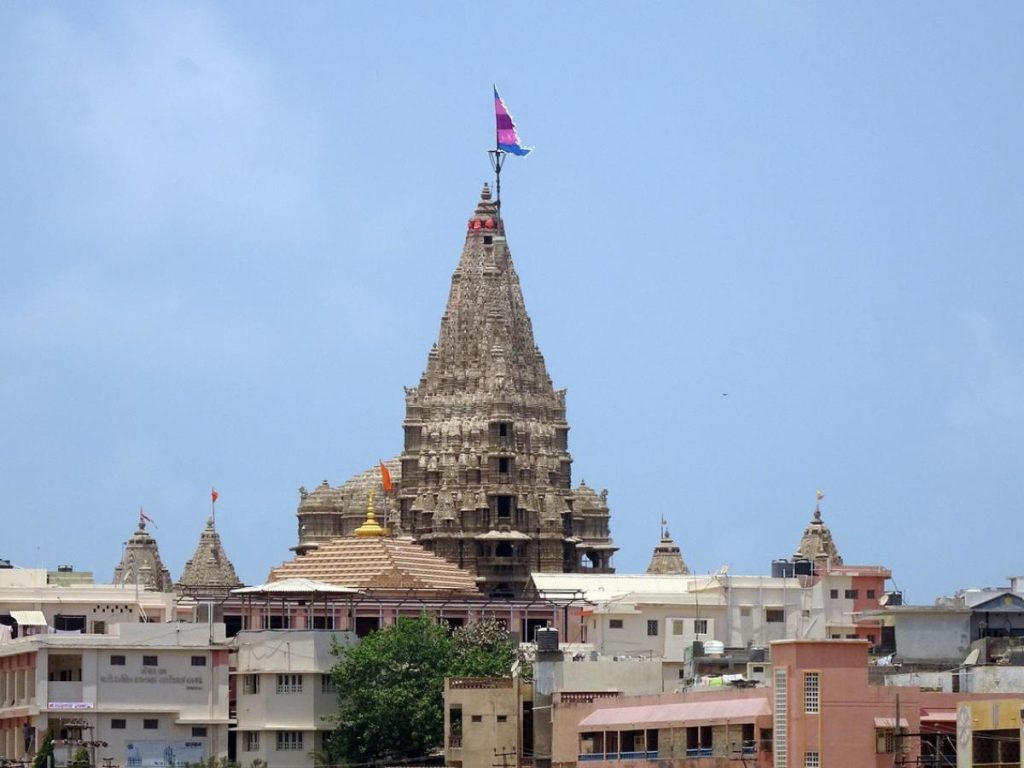
2. Rani Ki Vav
Rani Ki Vav is an elaborate stepwell located in Patan, Gujarat. It’s situated alongside the Saraswati River. It was constructed for King Bhimdev I, by Rani Udayamati in 1063. On June 22, 2014, Rani ki Vav was inducted into the UNESCO World Heritage List. These step-wells are subterranean water resources and storage systems. Reminiscent of an inverted temple and seven levels of stairs, Rani Ki Vav was constructed in the quintessential Maru-Gurjara architectural style. It is home to more than 800 geometrical principal sculptures, mostly of Vishnu.
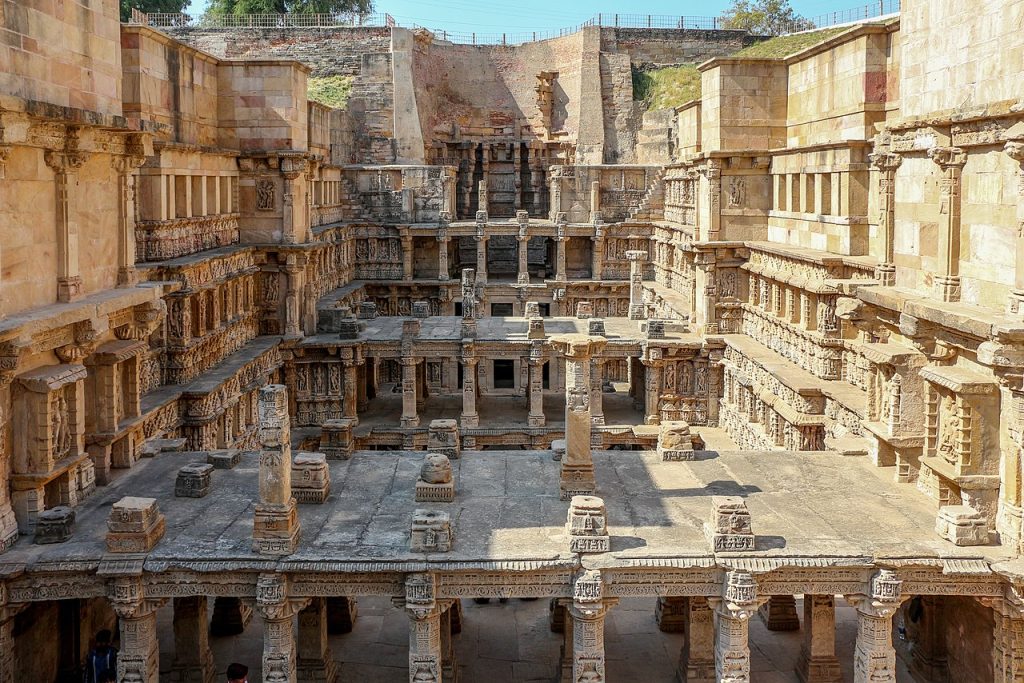
3. Laxmi Vilas Palace
The Laxmi Vilas Palace, home to Vadodara’s royal family, was constructed in the Indo-Saracenic architectural style of the 19th century. Constructed atop 500 acres, this is the biggest private residence constructed to date. It has ornate interiors that include a collection of art and weaponry as well as well-kept mosaics, chandeliers, and artwork. The Maharaja of Baroda at the time specifically commissioned Raja Ravi Varma to paint murals for the Laxmi Vilas Palace. It is situated on vast, park-like grounds with a golf course. It also features the Nalakhi Stepwell, the Maharaja Fateh Singh Museum and the Moti Baug Palace. In addition, there is an indoor badminton court and tennis court with teak flooring, as well as the Moti Bagh Cricket Ground.
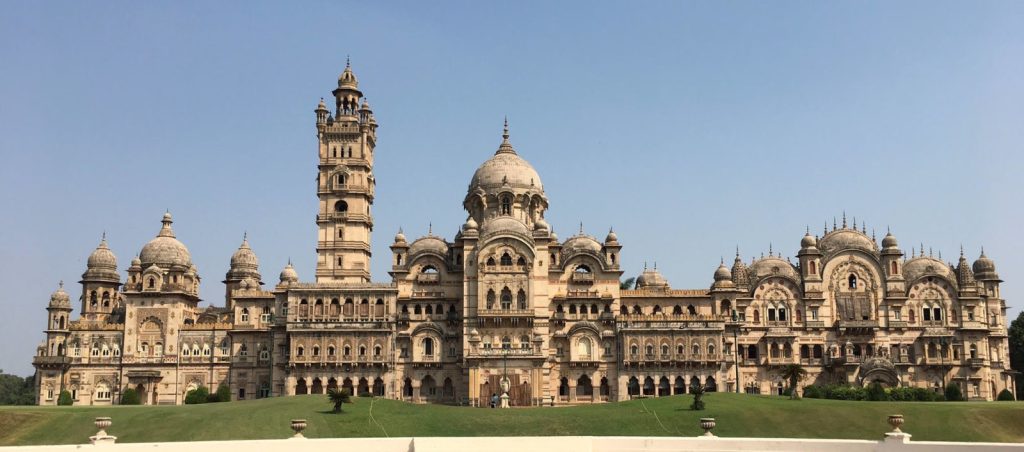
4. Adalaj Stepwell
Adalaj Stepwell was built in the 15th century. The elaborate carvings on the pillars supporting the five stories and the beam works are still mostly intact. The Indo-Islamic fusion architecture is embodied in the step-well. Light and air enter the octagonal well through the opening in the ceilings above the landing, but direct sunlight never reaches the steps except at noon. It is believed that Adalaj Stepwell is six degrees colder inside than it is outside. The stepwell features three openings that lead to an underground level with an octagonal aperture above. There are decorative carvings of mythological and rural scenes all over the walls. One slab of stone is used to carve the images of ‘Ami Khumbor’ (a pot holding the water of life) and ‘Kalp Vriksha’ (a tree of life).
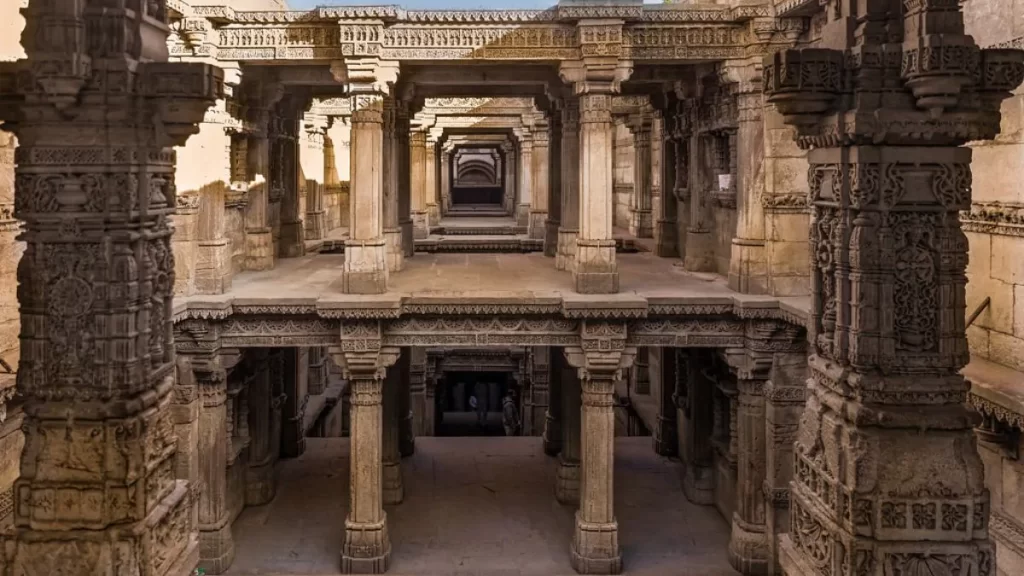
5. Sabarmati Ashram
Sabarmati Ashram was Mahatma Gandhi and his wife Kasturba’s original residence, located in Ahmedabad. He also launched his Dandi March from here. Of the various establishments on the grounds of the Sabarmati Ashram, the museum is the most well-known. The room is filled with pictures and Gandhi‘s private correspondence. Additional buildings at the ashram include ‘Vinoba,’ ‘Nandini,’ ‘Kutir,’ ‘Magan Niwas,’ and ‘Upasana Mandir.’
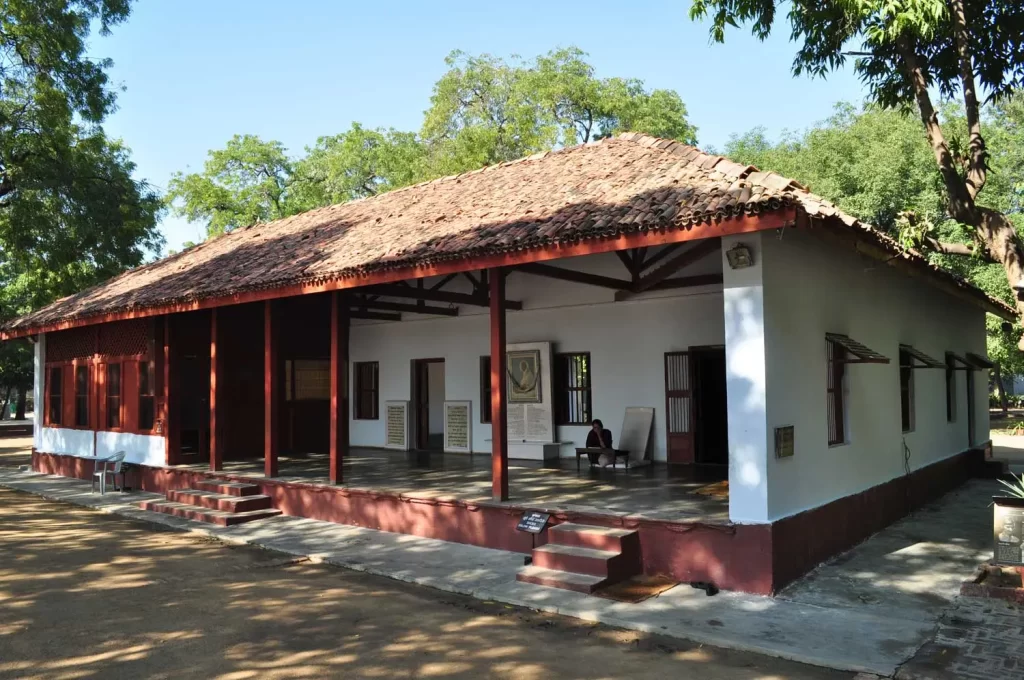
6. Modhera Sun Temple
The Modhera Sun Temple was constructed between 1026 and 1027 CE, under Bhima I’s (Chauulukya dynasty) rule. Upon entering the historical complex, you’ll find the ‘Suryakund,’ a rectangular-shaped kund with 108 shrines dedicated to different gods. You will witness the image of Lord Shiva dancing the ‘tandav’ and the three main shrines honouring Ganesh, Vishnu, and Shiva, which are situated on the three sides of the kund. The stairs of ‘Sabha Mandap’ lead to an assembly chamber featuring twelve sculpted representations of ‘Adityas,’ or the sun god. The sun is represented by the twelve carvings, representing twelve months on the pillars.
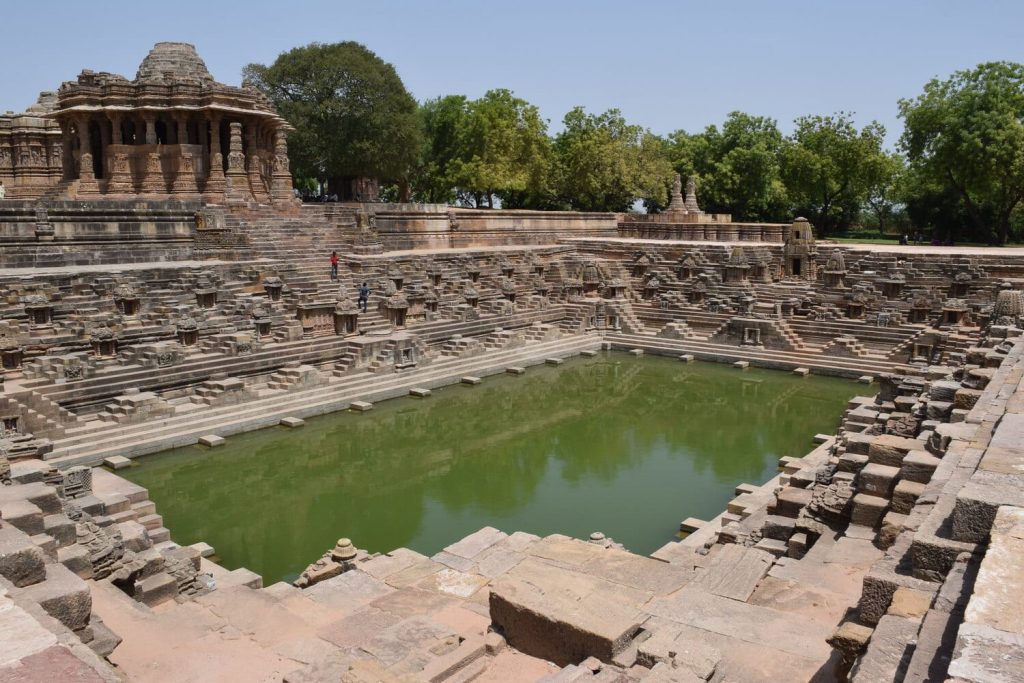
7. Lothal
Among the most significant cities of the Indus Valley civilization, which stretches into Pakistan, was Lothal. Combining the words ‘loth’ and ‘thal,’ lothal means ‘the mound of the dead’ in Gujarati. When the city was inhabited in 3700 BCE, it was a bustling port for trade. Constructed approximately 4500 years ago, it boasts the world’s oldest artificial dock, linked to the former Sabarmati River course. The drainage system, the warehouses, the bead factory, and the acropolis are among popular tourist attractions. There might have been trade with Egypt, Persia, and Mesopotamia. An entire township complete with a dock and market was unearthed here. Numerous artefacts, including jewellery, ceramics, seals, religious symbols, and everyday objects, are kept in an archaeological museum close to the site.
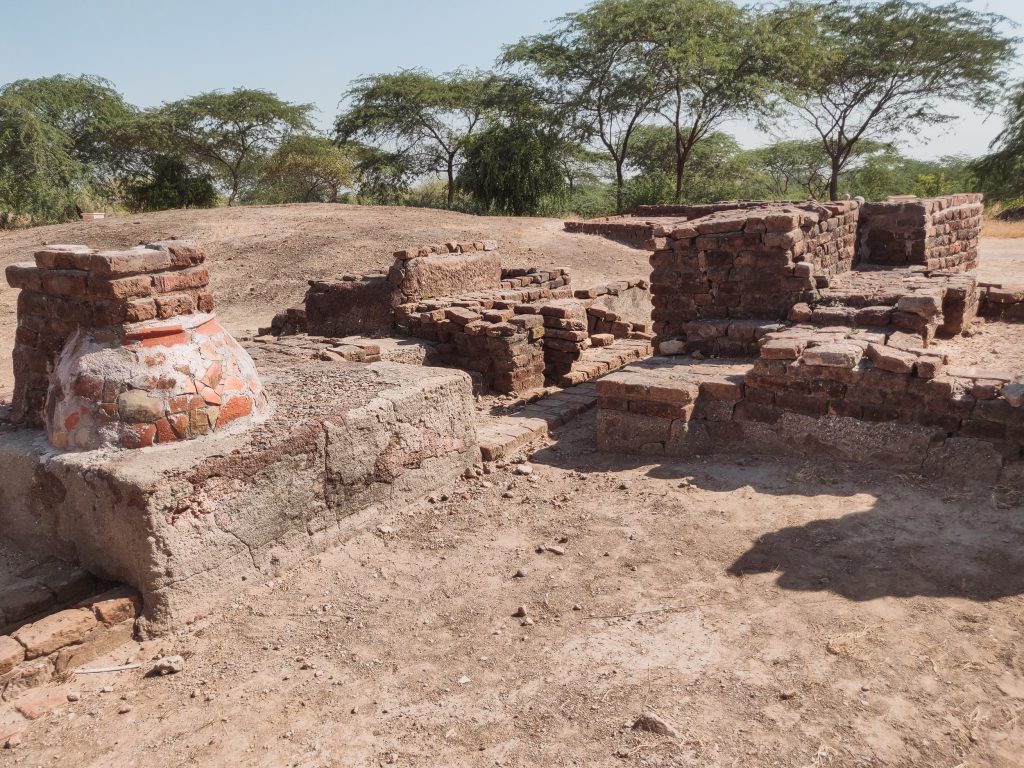
8. Diu Fort
Situated on Diu’s coast is the Diu Fort. Three of its sides view the sea, while the fourth overlooks a canal. The massive battle-scarred fort was constructed in 1535 by D. Nuno da Cunha and rebuilt in 1546 by D. Joao de Castro as a result of a strategic alliance between Bahadur Shah, the Sultan of Gujarat, and the Portuguese against the Mughals. This massive structure served as a prison, a church, a chapel, a warehouse, barracks, weapons and ammunition, and a residence for the nobility. St. George is the oldest of the Fort‘s several bastions. Once inside the Fort, you’ll notice large ramparts, numerous cannons, iron shells, and old-fashioned stonework.
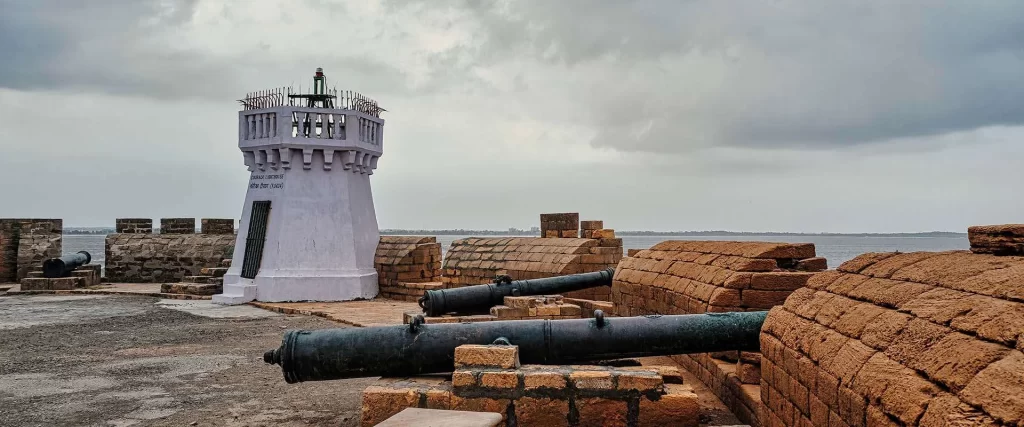
9. Kirti Mandir
Kirti Mandir is a memorial shrine made in honour of Mohandas Karamchand Gandhi and Kasturba Gandhi. It is located in Porbandar, Gujarat, India. In 1947, Shree Darbar Gopaldas Desai, a well-known communist and Gandhian, laid the groundwork. Sardar Vallabhbhai Patel dedicated the memorial on May 27, 1950, following the Mahatma‘s passing in 1950. Adjacent to it is the ancestral home of the Gandhi family. Gandhi’s life story is portrayed through a series of photographs displayed in a large courtyard. The far end of the courtyard is where his house is situated. This three-story building has been renovated multiple times since Gandhi‘s grandfather constructed it.
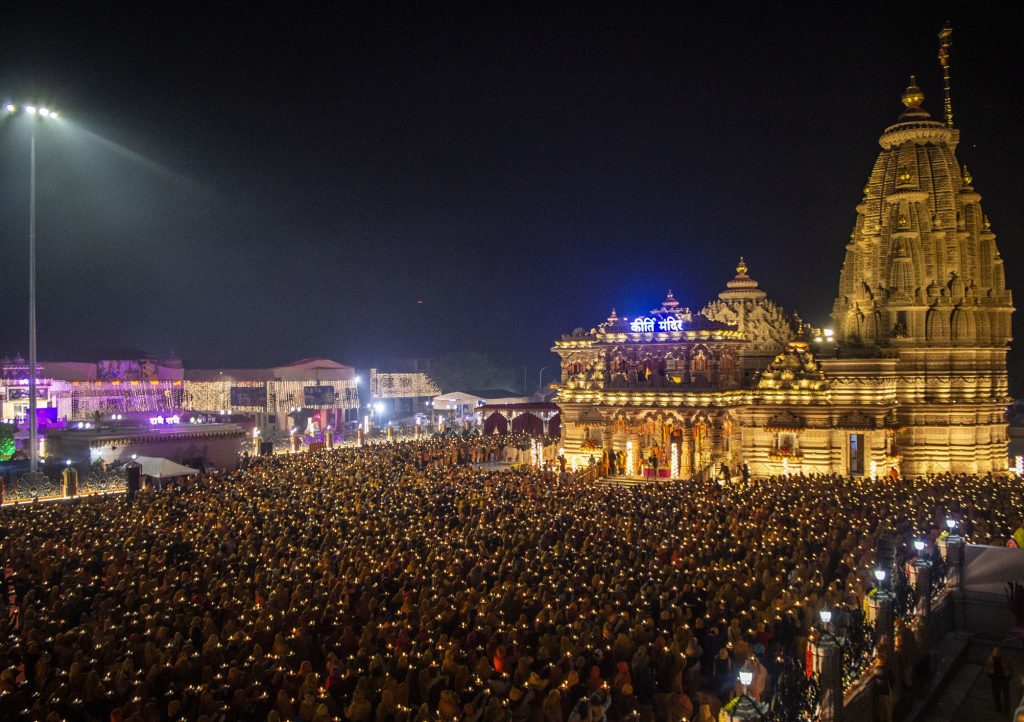
10. Sidi Saiyyed Mosque
Known by most as Sidi Saiyyedd ni Jali, the mosque was constructed by Sidi Saiyyedd between 1572 and 1573 AD, during which time the Mughals conquered Gujarat. Sidi Saiyyedd was an African-born Abyssinian saint who fought in Ahmed Shah’s army. Famous for its exquisite spider web-like jali windows, which depict the intricately entwined branches of the ‘tree of life.’ The elaborate latticework in the mosque’s central arch is likewise absent, drawing the viewer’s attention to the main, breathtaking piece on the back wall. The mosque is still used for prayer services.
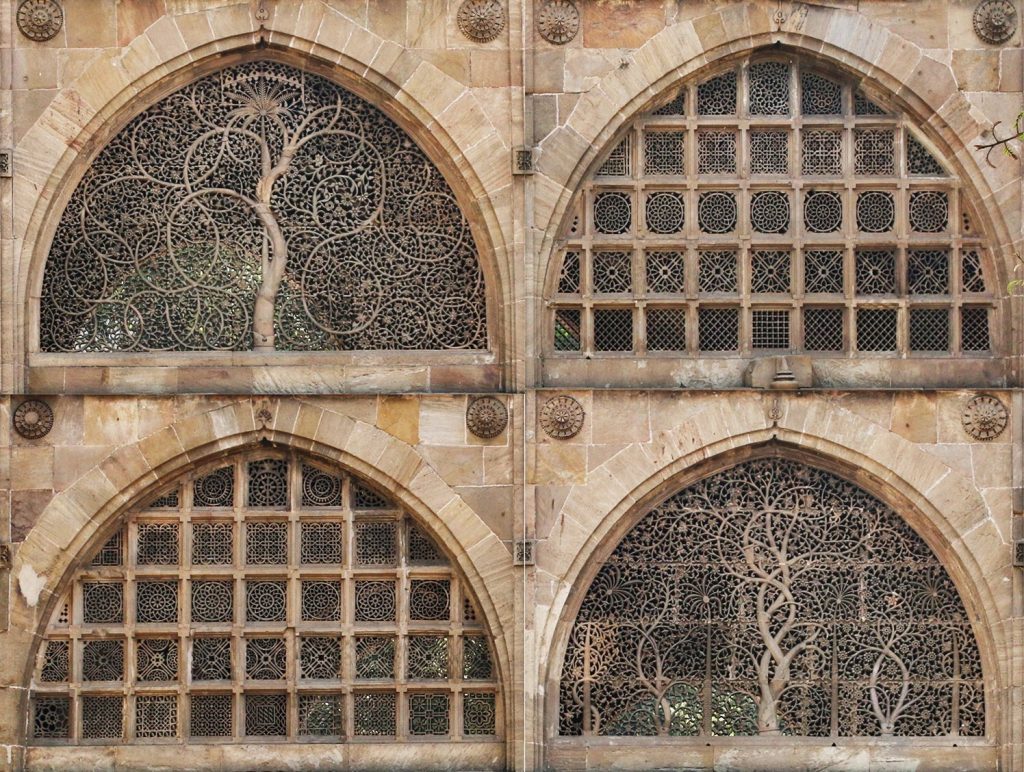
11. Sarkhej Roza
The complex of Sarkhej Roza consists of a mosque, tomb, and palace erected in honour of Ahmed Khattu Ganj Baksh, the spiritual guide of Ahmed Shah I. The magnificent structures are grouped around a large tank that was built in the middle of the 15th century by Sultan Mahmud Begada, the grandson of the Shah. Some of Ahmedabad’s kings used Sarkhej Roza as a retreat. Here are the mausoleums of Ganj Baksh, the largest in Gujarat, and Mahmud Begada (by the entrance, with geometric jalis casting patterns of light on the floor). Locals can be seen enjoying picnics in the spacious courtyard, giving the area a happy, community vibe.
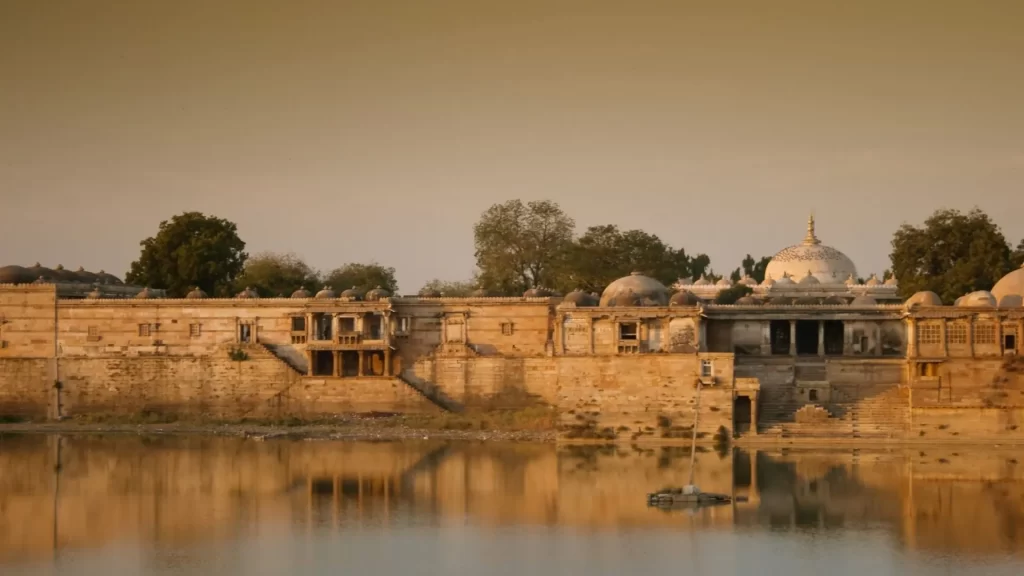
12. Prag Mahal
The palace was named for Rao Pragmalji II, who gave the order for the Prag Mahal to be built. The first bricks were placed in the palace in 1865. Colonel Henry Saint Wilkins created the Italian Gothic design, which he completed in 1875. After Pragmalji II died in 1875, Khengarji III, his son, took over. He had the local Kutchi builders in the area working for him. The largest of the three palaces within the Darbargadh walled complex, the 19th-century Prag Mahal, is worth seeing despite its dilapidated state due to the earthquake. Its magnificent ‘Durbar Hall,’ features glistening chandeliers, the Maharajah’s collection of taxidermied animals, and classical statues with gold skirts. The cricket blockbuster movie ‘Lagaan’ was shot at Prag Mahal.
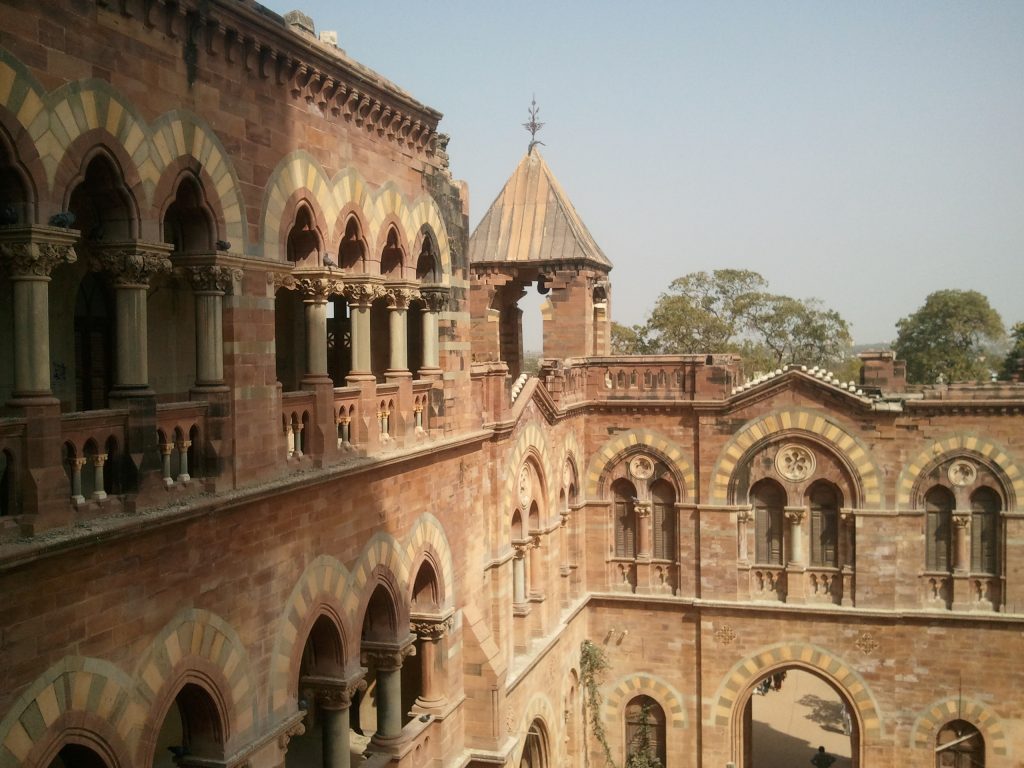
13. Aina Mahal
Constructed in 1752, this palace in Bhuj lost its top story due to an earthquake, but its lower level is still accessible to visitors and features a remarkable 15.2 m scroll depicting a Kutch state procession. Ram Singh Malam, an architect with expertise in European architecture, was given the project by Maharao Lakhpatji in 1750. One of the three buildings that make up the old town’s walled complex is the Aina Mahal. The intricately mirrored interior from the 18th century houses the Harding lithograph series, ‘The Rake’s Progress,’ a candelabra with Venetian glass shades, and an inverted mirror with blue and white Delphi-style tiling. From the top of the tower, panoramic views of Rani Mahal can be viewed. The museum housed within is a royal exhibition of Kutch art, weapons, and jewellery.
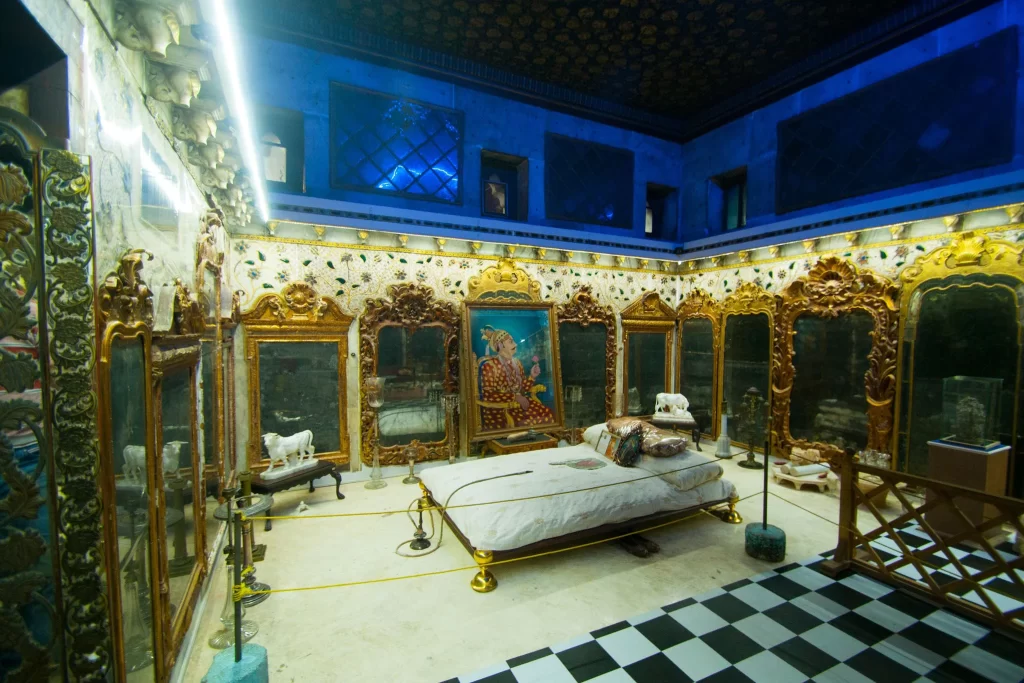
14. Bhadra Fort
Ahmed Shah, the city’s founder, constructed Bhadra Fort (Aark) in 1411 AD. Up until their independence, the British held the fort as a prison after seizing it in 1817. Today, a Kali temple and government offices are located at Bhadra Fort. Its gate served as the Ahmedabad citadel’s eastern entrance. ‘Maidan Shahi,’ or Royal Square, was located east of the fort between the ‘Teen Darwaja’ (Triple Gateway), where polo matches and royal processions were held.
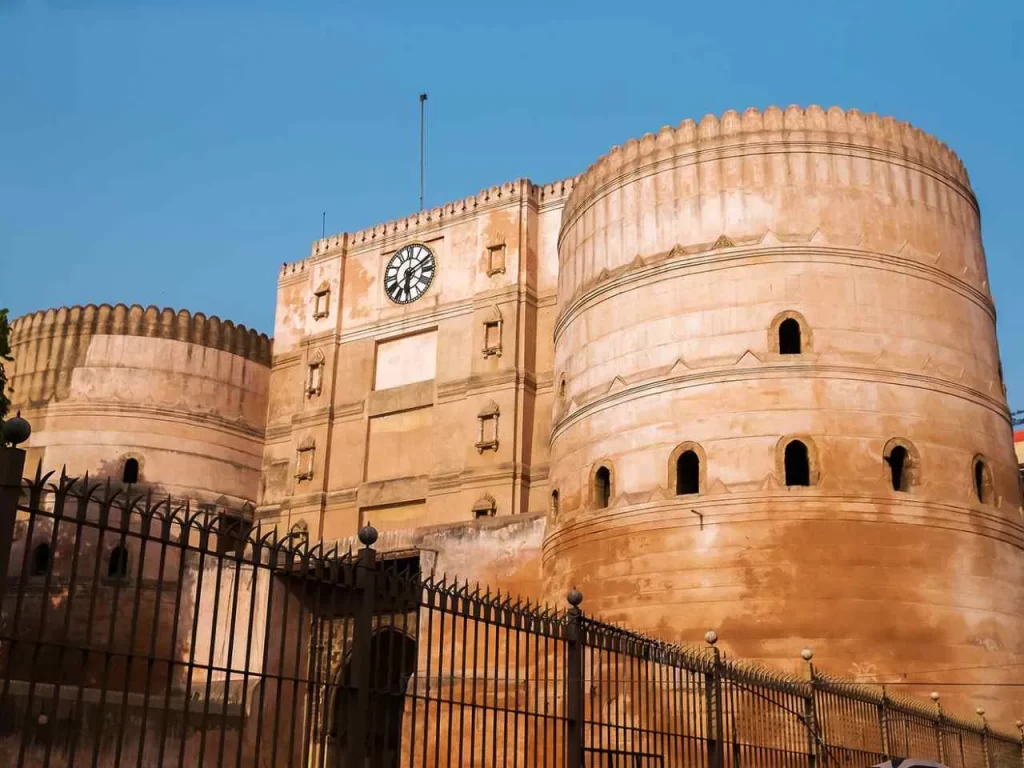
15. Jhulta Minar
Known also as the Shaking Minarets, Jhulta Minar has fascinated the greatest designers and architects. The connecting passage between the two minarets stays vibration-free even when one of them is shaken. It’s mysterious as the other minaret shakes with the effect. In Ahmedabad, there are two prominent pairs of Shaking Minarets: one is situated next to the Kalupur Railway Station Area and the other is across from the Sarangpur Darwaja. The Sidi Bashir Mosque’s Jhulta Minar in Sarangpur Darwaja has carved balconies and stands three stories tall. Although dilapidated, the other set of minarets near the Railway Station is taller. There are no longer any minaret shaking or vibrating demonstrations.
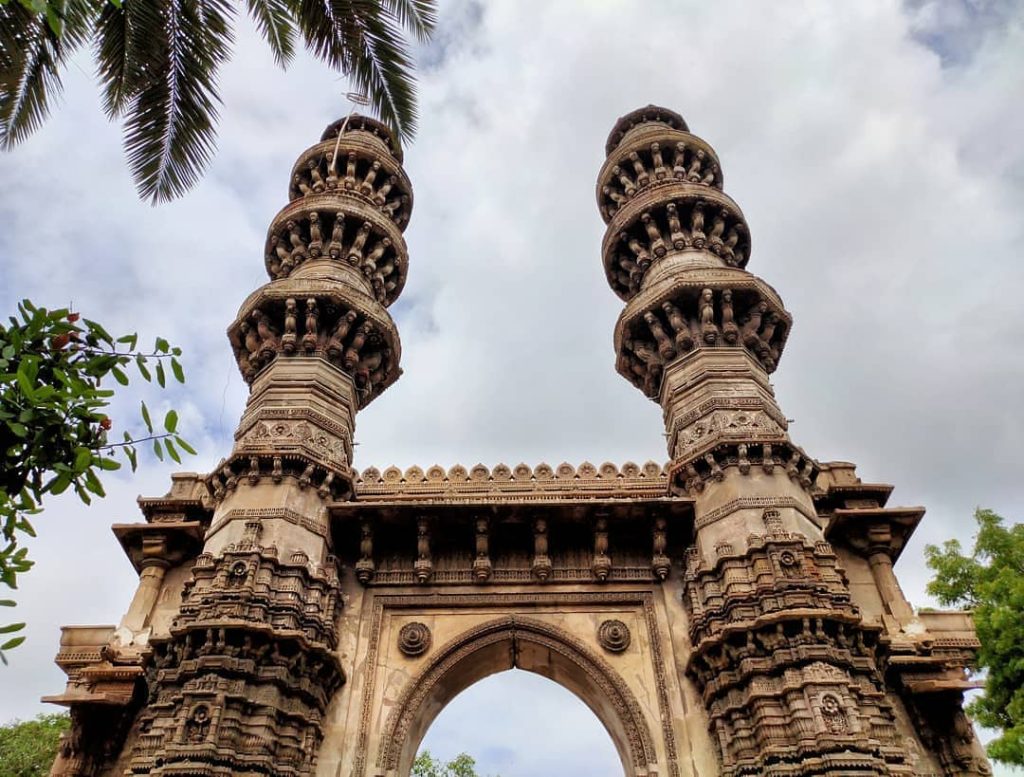
16. Somnath Jyotirlinga Temple
The first of India’s twelve sacred jyotirlingas is said to have arisen from the intricately carved, honey-coloured Somnath Jyotirlinga temple, where Shiva manifested as a flaming column of light. The temples are located where the Arabian Sea’s waves and the rivers Kapila, Hiran, and Sarasvati converge. Although the timeline of the ancient Somnath Jyotirlinga temple starts in 649 BC, it is thought to be older. In 1951, the current form was rebuilt. Though it’s difficult to see them through the foggy glass, vibrant dioramas depicting the Shiva story line the north side of the temple garden.
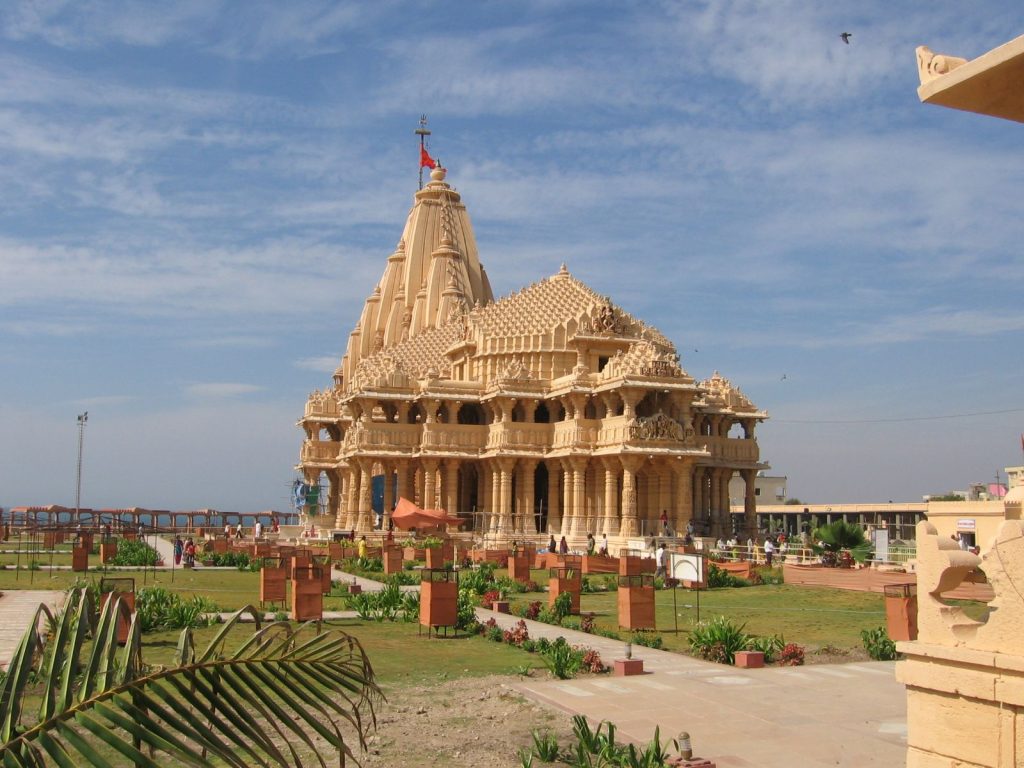
17. Teen Darwaza
The Teen Darwaza was constructed by Ahmed Shah, Ahmedabad‘s founder. The structure features three arches that reach a height of 25 feet. The width of the other two side arches extends to 13 feet, while the central arch measures 17 feet. In 1877, the open terrace was inaugurated. A significant Farman that Maratha Governor Chimanji Raghunath engraved on Teen Darwaza in 1812 affirms women’s equal rights to inherit ancestral property. The gateway’s exquisitely adorned semi-circular windows with its amazing meshwork are breathtaking. The tree of life is depicted in the window at the centre of the gateway. The carving of five palm trees covered in snakes is one of Teen Darwaza’s most striking features.
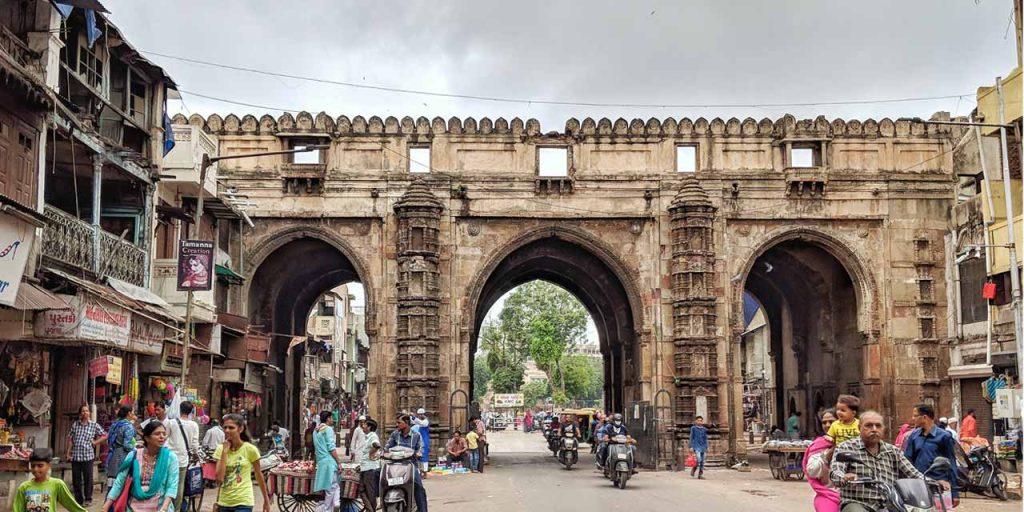
18. Uperkot Fort
Chandragupta is credited with designing the Uparkot Fort in 319 BC. The ramparts are 20 meters high in some places. Within its boundaries are two exquisite step wells, a collection of millennia-old Buddhist caves, and a magnificent former mosque. Two exquisite step-wells made of solid rock are housed within the fort. Cut in the fifteenth century, the circular, 41-meter-deep ‘Adi Kadi Vav’ bears the names of two slave girls who used to retrieve water from it. ‘Navghan Kuvo’ is nearly a millennium old, with a magnificent staircase that spirals around the well shaft. It is 52 meters deep and built to withstand sieges. You must visit the ancient dovecotes.
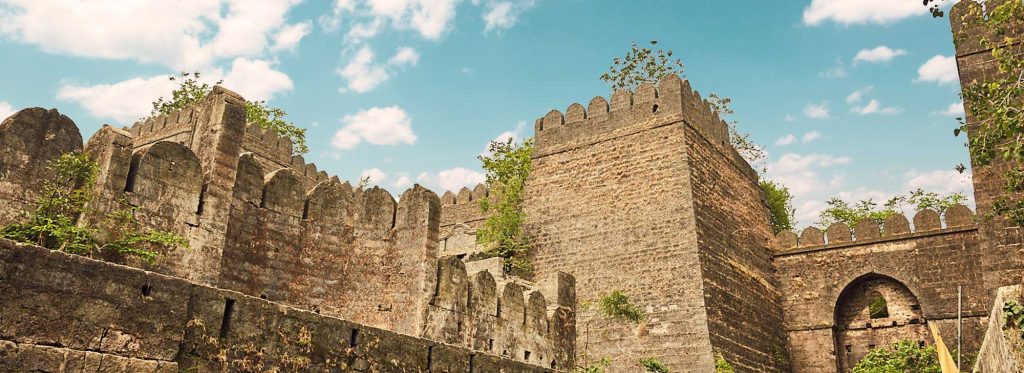
19. Mohabbat Maqbara
Mahabat Khanji began work on the yellow-walled Mahabat Maqbara in 1878, and his successor, Bahadur Khanji, finished it in 1892. In the old city, this magnificent mausoleum of Nawab Mahabat Khan II of Junagadh (1851–82) appears to burst out of the sky. With its French windows and Gothic columns, Mahabat Maqbara is a magnificent example of Euro-Indo-Islamic architecture in Gujarat, enhanced by its ornate silver inner doors. There are spiral stairs leading up to the top of the tower in the minarets on either side.

20. Champaner-Pavagadh Archaeological Park
Champaner, a UNESCO World Heritage site, is perched atop a hill overlooking the expanse of monuments at the base of Champaner. A rich historical site, the Champaner-Pavagadh Archaeological Park is dotted with forts, mosques, monuments, tombs, arches, temples, step-wells, and fortresses dating from the eighth to the fourteenth centuries. Pilgrims visit the Kalikamata Temple, honouring the goddess Kali.
Image Courtesy – iDiva
What Makes Grandma Moses’ Folk Art and Paintings So Beloved and Timeless?






